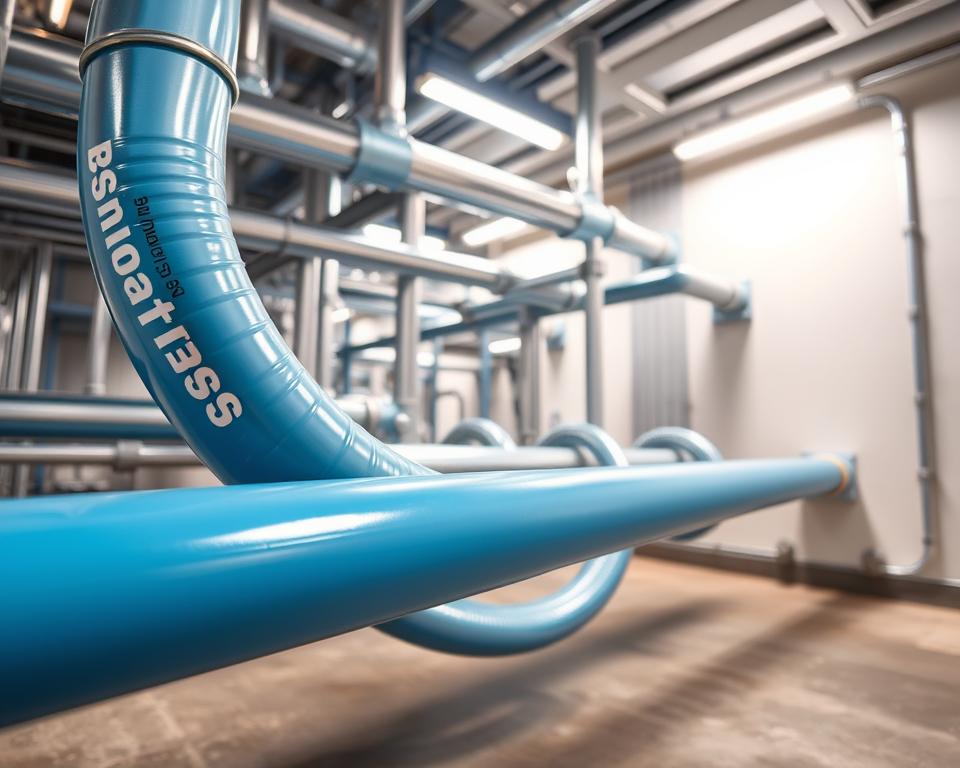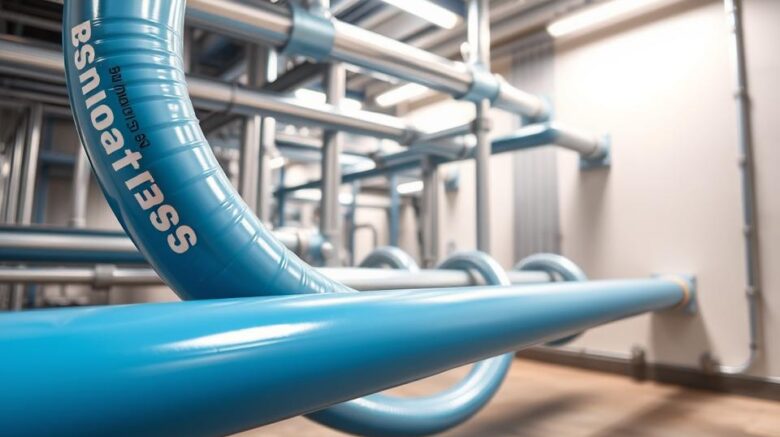Everything You Need to Know About PVC Air Compressor Piping
You might be surprised to learn that a failure in a compressed air system can unleash power on par with dynamite. Despite the hazards, numerous workshops continue installing piping systems from unsafe materials. Here’s why you must prioritize safety over cost when selecting PVC air hose.
Despite growing interest in certain materials, OSHA strictly prohibits their use in above-ground applications. Over time, exposure to oils and temperature changes weakens them, leading to catastrophic failures. Even at “safe” pressure ratings, the risk of explosions remains high.
Turn to Installation Parts Supply for sturdy aluminum systems. Spending on the right materials prevents OSHA penalties and protects employees. Discover steps to construct a secure system.

Core Findings
- Explosion danger leads OSHA to outlaw some pipe materials.
- Heat and cold swings slashes claimed pressure capacity.
- Material becomes brittle with age, upping rupture chances.
- Switching to aluminum vastly improves safety.
- Proper investment prevents costly fines and accidents.
Why You Shouldn’t Use PVC for Compressed Air
All major brands advise against certain plastics in compressed air. A breach in a pressurized air line unleashes explosive power, unlike water. Select your piping wisely to avoid deadly failures.
- Brittleness: Sub-freezing temperatures turn materials brittle, increasing fracture risks.
- Adhesive failures: Oil contamination and heat cycles break down glue bonds.
- Misleading ratings: Ratings halve by 110°F, a common shop temperature.
After a PVC burst hurt staff, OSHA levied a $110,000 fine. Don’t forget, compression heat cuts into rated safety margins.
“Above-ground use of certain plastics for compressed air violates OSHA standards due to explosion risks.”
Metal alternatives fail more predictably, bending rather than fragmenting. PVC shards fly far and fast, causing collateral damage.
Constant temperature swings in shops speed up pipe aging. UV light and solvents over time sap pipe strength, triggering dangerous failures.
Best Materials Instead of PVC for Air Lines
Aluminum air lines deliver superior safety and leak reduction. With 90% fewer leaks than black pipe, they’re a top choice for modern facilities. Lightweight, rust-proof aluminum stands up to years of service.
Threadless modular aluminum assemblies speed assembly. Installation Parts Supply stocks ready-to-snap aluminum modules. One auto factory trimmed labor hours by 40% via aluminum retrofits.
- Copper: Best for cleanrooms due to natural antimicrobial properties. Requires soldering expertise.
- Stainless Steel: Resists rust in humid areas like coastal workshops.
- ABS/HDPE: Chemical-resistant for labs and factories handling solvents.
“Our aluminum retrofit reduced energy waste by 15%—paying for itself in 18 months.”
Don’t ignore torque specs. Cracks from overtightening and leaks from under-tightening are common. Stick to recommended 25–30 ft-lb torque for aluminum.
For food-grade applications, NSF-certified options ensure air purity. Always match materials to your environment’s demands.
How to Choose the Right Piping Material for Your Needs
Consider cost, compliance, and efficiency in your pipe decision. A Midwest factory saved $12,000 annually by switching to leak-resistant aluminum. Here’s how to make the right choice.
| Material | Cost (per ft) | Maintenance | ROI Time |
|---|---|---|---|
| Aluminum | $8.50 | Low | 18 months |
| Black Pipe | $5.00 | High | N/A |
| Copper | $10.20 | Medium | 24 months |
Watch your operating temperatures. From arctic chills to high heat, aluminum outperforms. For chemical-heavy environments, stainless steel resists solvents.
Pro Tip: Calculate ROI using CFM loss formulas. A 10% air leak in 50 HP equals about $3,500 annually.
- Ensure your pipe PSI rating exceeds system pressure.
- Keep records of inspections and tests to satisfy OSHA.
- Request a free system audit from Installation Parts Supply.
“Our aluminum retrofit cut energy waste by 15%—paying for itself in 18 months.”
Hire pros for big installs to guarantee airtight connections. Always verify warranty terms—some materials cover 10+ years.
To Conclude
Safety outweighs sticker price in compressed-air piping. Older systems account for 92% of accidents due to degraded piping. With 99.8% uptime, aluminum is the clear long-term choice.
Key takeaways:
- Say no to plastics that can explode.
- Choose rust-proof metals over plastics.
- Failing to comply can cost you big in fines and claims.
Upgrade now and secure your workplace. Installation Parts Supply provides same-day quotes and limited-time discounts on starter kits. Download our free maintenance template or call for emergency replacements.
Make safety your piping priority—act today.
